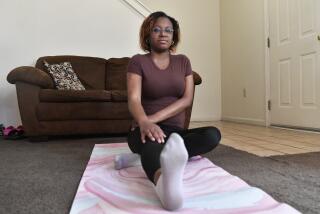Fighting diseases with genetic therapy
Genes make us who we are — in sickness and in health. We get our genetic makeup from our parents, of course, but in the future, we might be getting genes from our doctors too. Imagine your doctor promising to cure your cancer or heart disease by prescribing some new snippets of DNA.
For some diseases, gene therapy is already a reality. In other cases, genetic cures are still years away. Despite many challenges and setbacks — including some that are surely yet to come — experts predict that gene therapy will eventually become a crucial and even common part of healthcare.
“In the future, what you’re going to see is many more diseases being approached using gene therapy,” says Dr. David Russell, a hematologist and gene therapy researcher at the University of Washington in Seattle. “We’ll eventually move out of the relatively rare diseases and move on to more common ones.”
Research using altered genes has shown promise in treating blindness, cancer, hemophilia, heart disease, immune disorders and more. Engineered genes have already eradicated leukemia in a small group of patients; Dr. Carl June, an oncologist at the University of Pennsylvania’s Perelman Medical School in Philadelphia, predicts the treatment could be widespread in as little as five years.
Virus vectors
Gene therapy is the process of adding a gene to cells to replace one that’s either missing or broken. For many illnesses, researchers already know which genes should be able to do the job. The problem lies in finding the right delivery system, or vector.
These vectors are frequently benign viruses that work like Trojan horses, carrying the new genetic information to the cells. The trick is to find a vector that the patient’s immune system won’t destroy.
One much-studied vector is the adeno-associated virus, which tends to travel to muscle cells. This harmless virus is the workhorse behind Glybera, which is poised to become the first approved gene therapy in the Western world.
Glybera, which was approved by the European Medicines Agency in July, treats a rare genetic condition called lipoprotein lipase deficiency, or LPLD. The treatment replaces a defective gene with a healthy one and helps LPLD patients — who can’t break down fat — avoid agonizing bouts of stomach pain and life-threatening pancreatitis. A single treatment is expected to last for several years. UniQure, the Dutch company that makes the drug, has yet to apply for approval in the U.S.
Virus vectors may someday seem old school. Researchers are experimenting with introducing an artificial 47th human chromosome to deliver new genes. It would exist alongside the standard 46 human chromosomes and carry additional genetic code to fight a specific disease.
Animal experiments have shown impressive progress. Gene therapies in mice have been effective to some extent in treating HIV infection, nicotine addiction, blindness and a fatal nervous system disease called spinal muscular atrophy. Transitioning these therapies to humans could take years or decades — if it ever happens at all.
Unfortunately, the history of gene therapy is riddled with disappointments. One particularly dark moment was the death in 1999 of 18-year-old Jesse Gelsinger of Tucson. Gelsinger suffered from a rare metabolic disorder called ornithine transcarbamylase deficiency, and he agreed to participate in a trial of a new gene therapy treatment. He died after his ammonia levels skyrocketed, causing brain damage followed by organ failure. An investigation found that researchers failed to report the possible risks of the drug, and the teen became the symbol of gene therapy’s dangers.
Reason for hope
To many, the whole idea of gene therapy has a scary whiff of “Brave New World” about it. Skeptics question whether some promises will ever reach fruition. Even doctors who are devoting their life’s work to gene therapies admit they’re in it for the long haul.
“Progress in gene therapy occurs very slowly,” says Dr. David Dichek, a cardiologist at the University of Washington in Seattle and a pioneer in developing gene therapy treatments for heart disease.
Still, there’s plenty of room for optimism. In 2011, the story of a cancer survivor in New Jersey captivated physicians and the public.
William Ludwig, a retired corrections officer who was 65 at the time, was near death from chronic lymphocytic leukemia when he signed up to be the first patient to participate in a trial of a new gene therapy treatment.
In the trial, led by June, researchers started by removing a billion of Ludwig’s T cells, immune system cells that fight tumors and infections. Then the researchers bolstered those T cells with modified genes — using a disabled version of HIV virus as the vector — and introduced the revamped cells into Ludwig’s body.
The new genes did several things: They made copies of themselves, recognized the cancer cells and went on the attack. The fact that the T cells reproduced, allowing them to continue wiping out leukemia cells, was a major advance.
After 10 days, Ludwig became extremely ill with a high fever. Doctors feared he would die; instead, he recovered with no trace of leukemia and is still in complete remission. After two years, the other two patients from the same trial also appear to have recovered completely. June then conducted a second clinical trial in which five of 10 patients remain leukemia-free.
Confident that June’s approach will take off, the pharmaceutical giant Novartis has agreed to invest at least $20 million to help develop the treatment. Eventually, June says, “we’re planning on treating 100 patients a year.”
So far, he’s received about 5,000 emails from patients wanting to participate in his clinical trials.
“I think it will be FDA-approved within the next five years,” June says. “It will be something you can go to your community hospital and get.”
For now, he’s concentrating on patients whose cancer has defied standard treatment. But he believes that his form of gene therapy could someday replace radiation and chemotherapy as frontline treatments for many kinds of cancer.
Other uses
In another widely publicized case, a similar gene therapy treatment saved the life of 7-year-old Emily Whitehead of Philipsburg, Penn., who suffered from acute lymphoblastic leukemia. In April, she became the first child in the world to receive genetically engineered T cells. Her cancer quickly disappeared.
Gene therapy is being studied as a treatment to improve heart health too.
Looking for more effective and lasting treatments for plaque buildup in the arteries, Dichek and his team at the University of Washington injected genetically altered cells directly into the arterial walls of rabbits. The rabbits’ plaque either stopped building up or actually lessened, and the results lasted at least 48 weeks. Now, Dichek is awaiting funding for further trials.
“Atherosclerosis itself is a complex disease,” he says, and it will take a while before humans could ever benefit from the approach. “I think we’re still looking at more than a decade.”
The cardiologist said he’s been surprised at how little resistance he’s received for an approach that some people equate with messing with Mother Nature.
“People are far more accepting of the technology,” he said. “They’re more concerned about solving these health problems than they are about the possible effects from altering people’s genes.”






